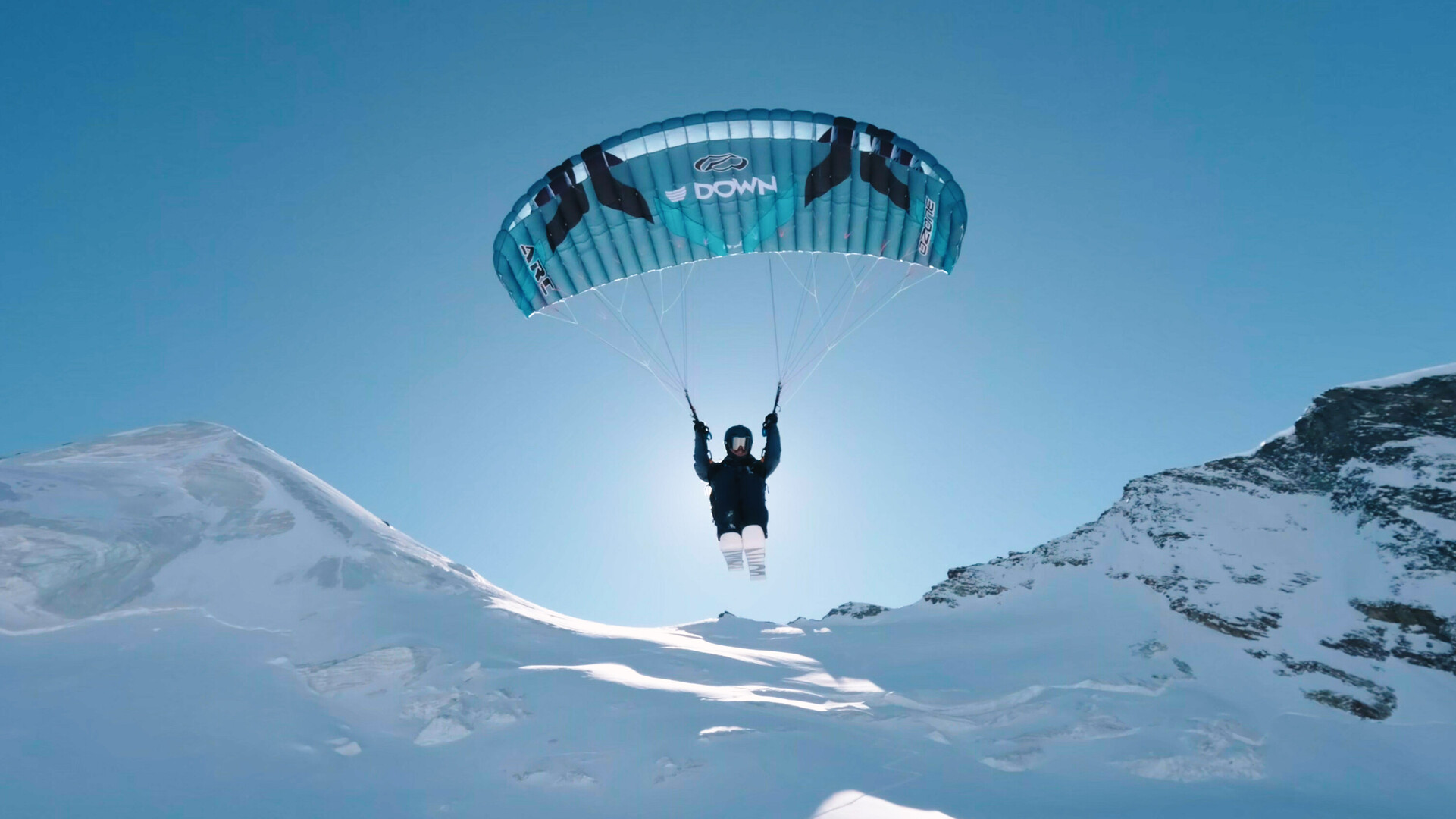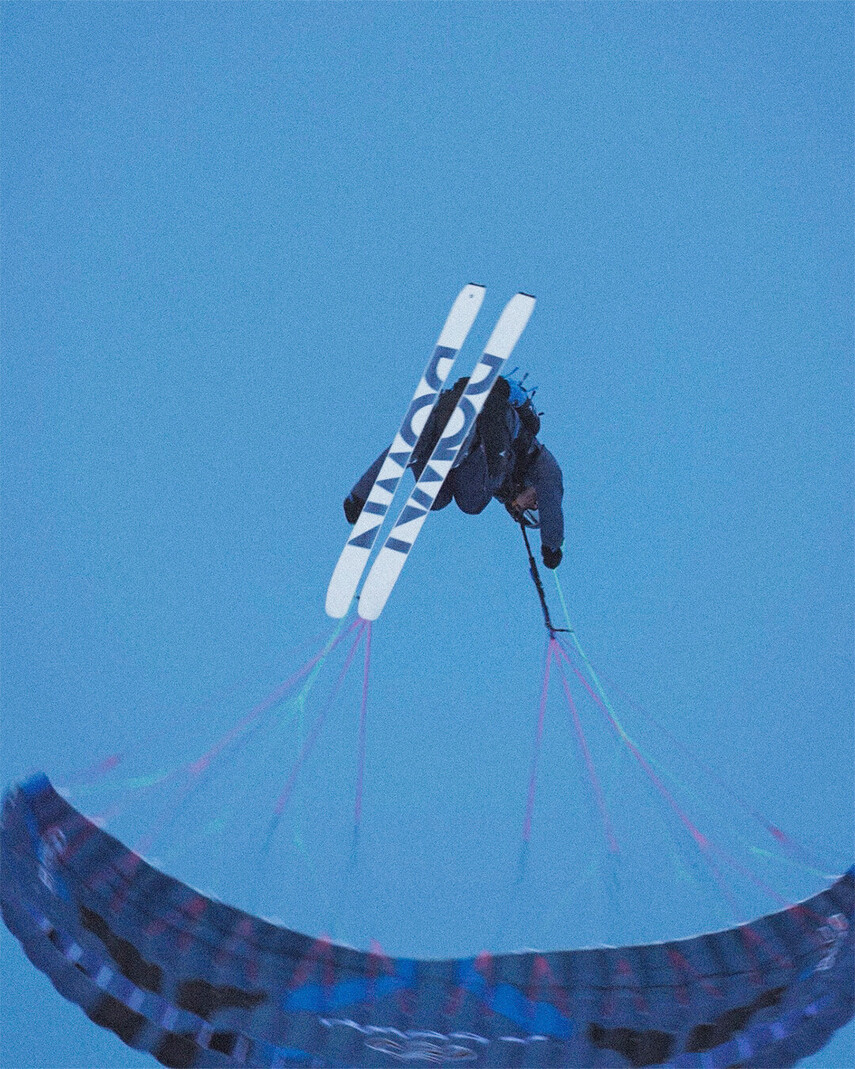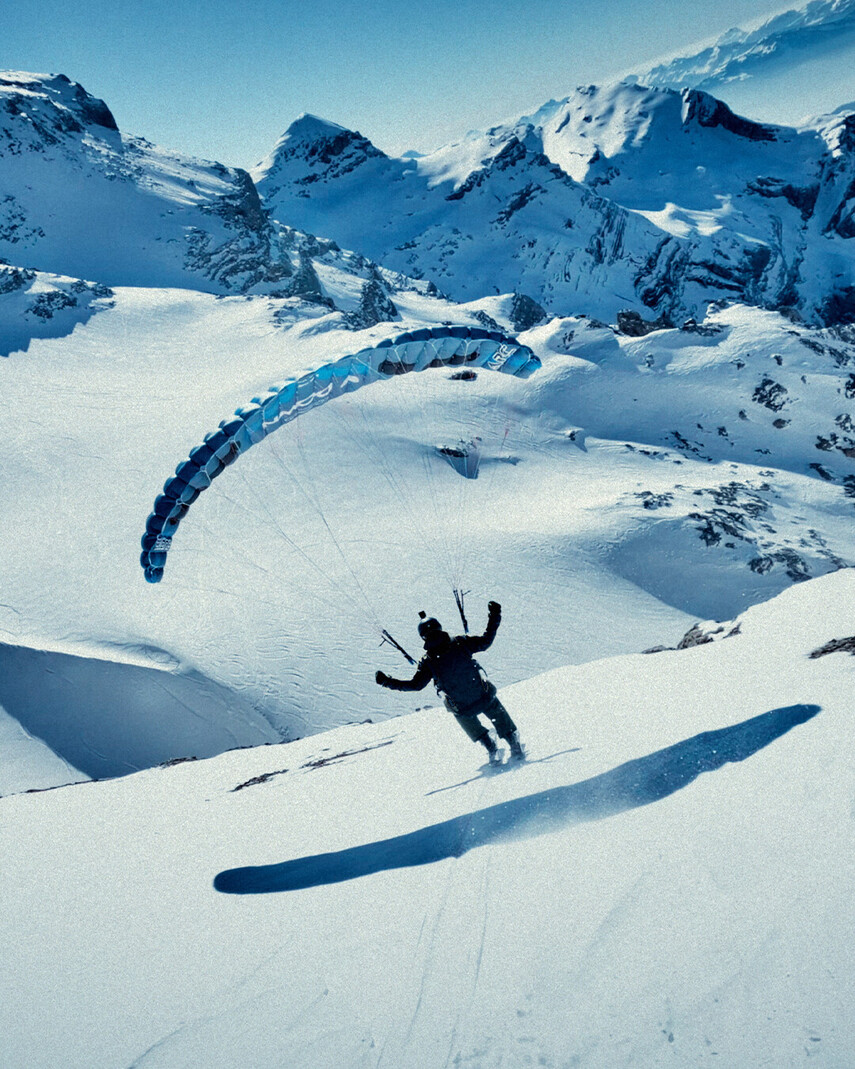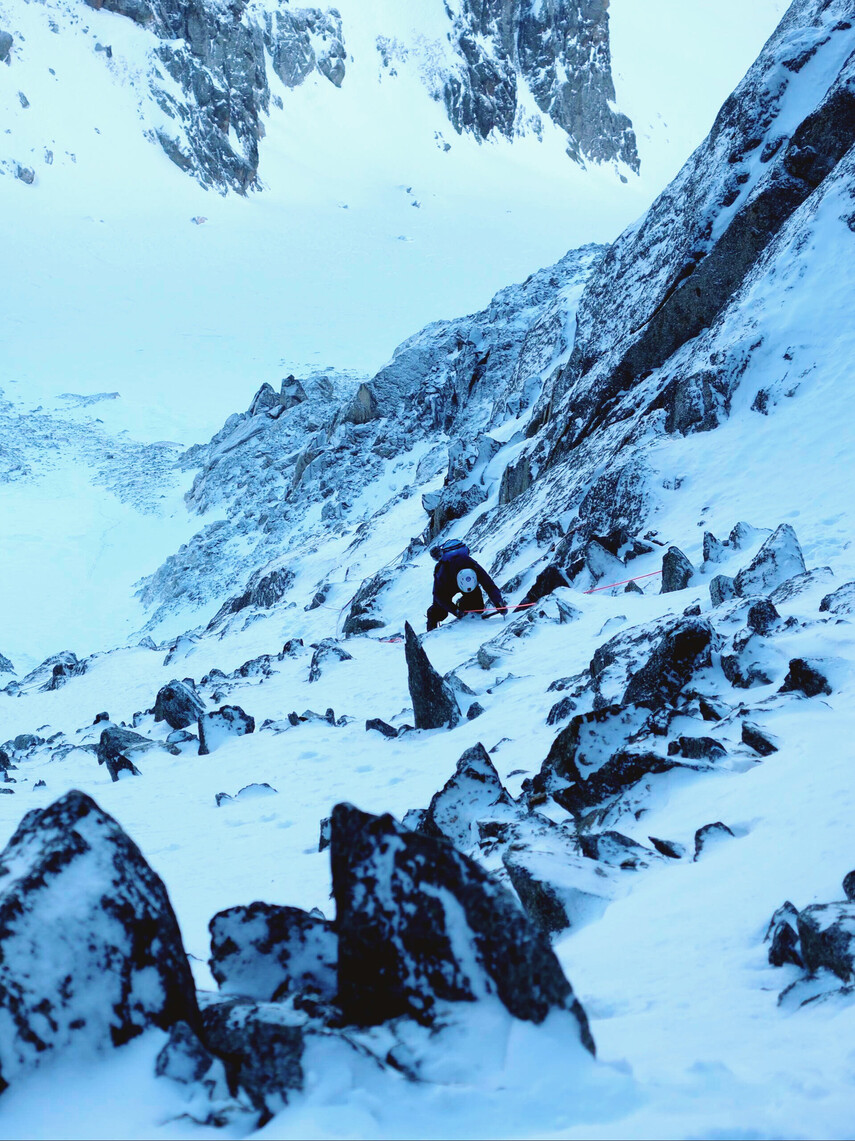
Line of flight
Anthony Dutruy loves leaving his own unique line on a mountain. In this interview, the Swiss speedrider tells us how he got into the sport and what fascinates him about it.

Anthony Dutruy grew up between Lausanne and Geneva. His local ski resort is Glacier 3000 (Les Diablerets), where he still loves to ride today.
You and skiing—how did it all begin?
As a kid, I went skiing every weekend with my parents. Then came my freestyle phase in the snow park. When you’re 14 and you see cool videos online, you want to try those tricks yourself. Through a classmate, I ended up on the Junior Freeride World Tour and competed in freeride events for two years. That was really exciting because you also get avalanche safety training there.
Why did you give up classic freeriding?
When I was 17, I injured my knee. To allow the cartilage to regenerate, I was unable to ski for almost two years. I thought I’d never jump off a steep slope again because every landing made my knee really hurt.
And the alternative was speedriding?
Yes, I wanted to freeride again, but instead of jumping off steep slopes, I wanted to fly. So first I learned paragliding, and a year later, I started speedriding.
How is your speedwing different from a regular paraglider?
A paraglider has about 24 square meters of surface area; my speedwing has just six. That’s tiny—any smaller, and flying would be impossible.


What’s your top speed when speedriding?
With my speedwing, I can reach up to 130 km/h (80 mph). That’s three to four times faster than with a regular paraglider!
Do you still find it as exciting today as you did on your first flights?
It’s still exciting, of course, but after hundreds of flights, it’s not just about the thrill and adrenaline—it’s about leaving a beautiful line on the mountain, the perfect blend of skiing and flying. A lot of people probably think we’re just reckless or crazy. It’s not as carefree as it looks. In reality, every flight is carefully planned. At 100 km/h (60 mph), your brain doesn’t have time to make decisions. You can’t just decide where to land at the last minute.
How long does a typical flight last?
Two minutes. So, very short. My longest flight was maybe five minutes. With a regular paraglider, you can use thermals to gain some altitude again. With a speedwing, you’re always going downhill. And if there is thermal lift, you just fly through it and might feel a slight jolt at most.
After hundreds of flights, it’s not just about the thrill and adrenaline—it’s about leaving a beautiful line on the mountain.
 Anthony Dutruy
Anthony Dutruy
Alongside the sport, you earned a master’s degree at ETH Zurich, work for Swiss Air, and started a business: Kiss of Life. How do you balance it all?
That’s my biggest challenge! The week always feels too short. But you have to look at it rationally: speedriding isn’t a sport you can make a living from, and the injury risk is high. So it’s smart to have a backup plan.
It seems you actually have several. With Kiss of Life, you’ve developed a new avalanche backpack for freeriding. What makes it special?
Airbag backpacks are currently the most effective solution. If you get caught in an avalanche, you pull the ripcord, the airbag inflates, and ideally you float on the surface. But if you’re buried under the snow, traditional airbags are useless, and you have to rely on your friends to find you within 15 minutes. Our avalanche backpack is designed so you can breathe the air from the airbag if you’re buried—for more than 90 minutes. The first prototypes performed really well, and we hope to find an investor for the idea.
We’re keeping our fingers crossed! Thanks for the interview!



EOFT 2025 Programm
Drop the Line ist Teil des EOFT 2025/26 Filmprogramms.